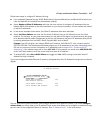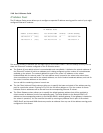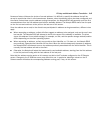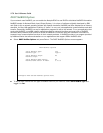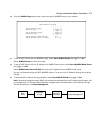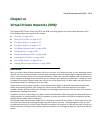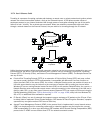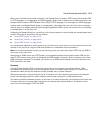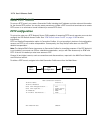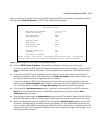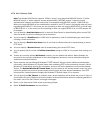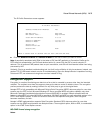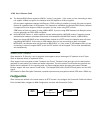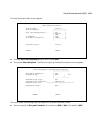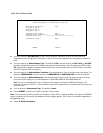Virtual Private Networks (VPN) 10-75
When used to initiate the tunnelled connection, the Netopia Router is called a PPTP Access Concentrator (PAC,
in PPTP language), or a foreign agent (in ATMP language). When used to answer the tunnelled connection, the
Netopia Router is called a PPTP Network Server (PNS, in PPTP language) or a home agent (in ATMP language).
In either case, the Netopia Router wraps, or encapsulates, information that one end of the tunnel exchanges
with the other, in a wrapper called General Routing Encapsulation (GRE), at one end of the tunnel, and unwraps,
or decapsulates, it at the other end.
Configuring the Netopia Router for use with any of the three protocols is done through the console-based menu
screens. Each type is described in its own section:
■ “About PPTP Tunnels” on page 10-76
■ “About IPsec Tunnels” on page 10-80
■ “About ATMP Tunnels” on page 10-94
Your configuration depends on which protocol you (and the router at the other end of your tunnel) will use, and
whether or not you will be using the VPN client software in a standalone remote connection.
Note: You must choose which protocol you will be using, since you cannot both export PPTP and use ATMP, or
vice versa, at the same time.
Having both an ATMP tunnel and a PPTP export is not possible because both functions require GRE and the
router’s PPTP export/server does not distinguish the GRE packets it forwards. Since it processes all of them,
ATMP tunneling is impaired. For example, you cannot run an ATMP tunnel between two routers and also have
PPTP exported on one side.
SS
SS
uu
uu
mm
mm
mm
mm
aa
aa
rr
rr
yy
yy
A Virtual Private Network (VPN) connects the components of one network over another network. VPNs
accomplish this by allowing you to tunnel through the Internet or another public network in a manner that
provides the same security and features formerly available only in private networks.
VPNs allow networks to communicate across an IP network. Your local networks (connected to the Netopia
Router) can exchange data with remote networks that are also connected to a VPN-capable router.
This feature provides individuals at home, on the road, or in branch offices with a cost-effective and secure way
to access resources on remote LANs connected to the Internet with Netopia Routers. The feature is built
around two key technologies: PPTP and ATMP.



